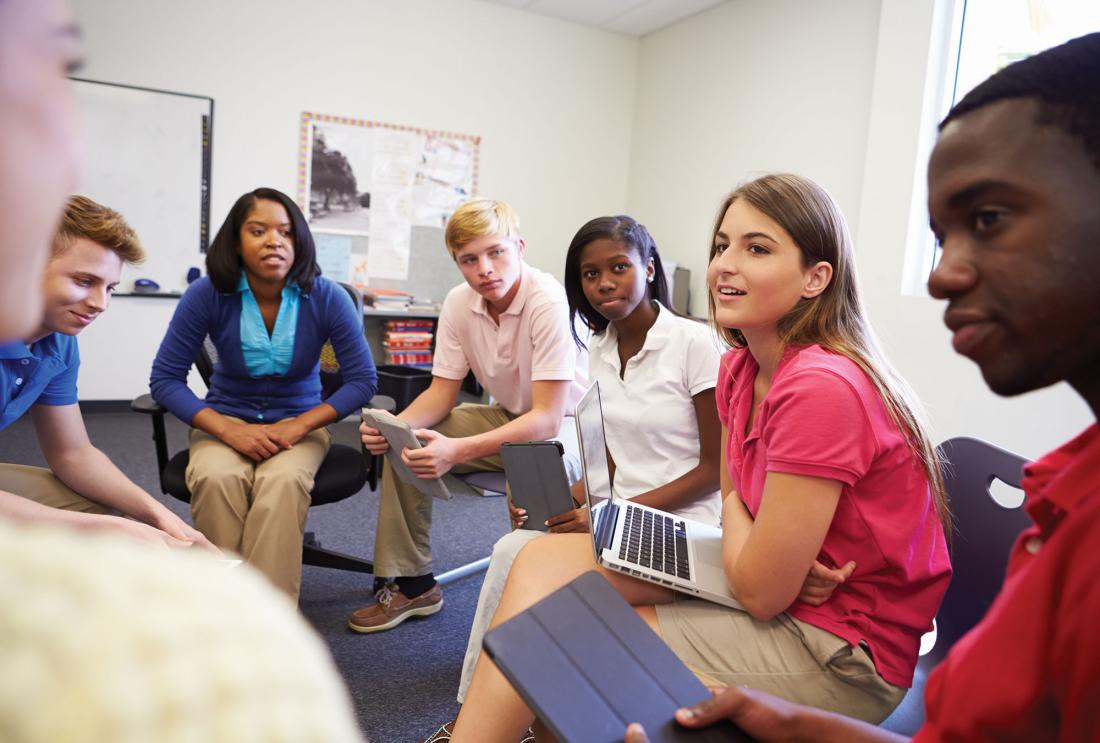Peer Pressure and Educational Investments in the United States
- Students
- Student learning
- Social networks
- Community monitoring
Despite the long-term benefits of education, many young people do not make the educational investments required to succeed in school, such as attending class or completing homework. To test whether students’ educational investments are affected by peer pressure, researchers offered high school students the opportunity to sign up for free access to an online SAT preparatory course. Some students were told that their decision to sign up would be public, and others were told that their decision would be kept private. In non-honors classes, sign-up rates were lower for students who were told that their decision would be public. In honors classes, sign-up rates were not affected.
Problema de política pública
Despite the long-term benefits of education, many young people do not make the educational investments required to succeed in school, such as attending class or completing homework. There are many potential reasons why young people may under-invest in their own education. For example, young people may underestimate the future benefits of education, or family obligations may conflict with their schooling. Another possible explanation is that young people face peer pressure that discourages them from making educational investments for fear of being bullied, being teased, or losing social status. However, there is little evidence of whether and how peer pressure influences young people’s educational decisions, and it is difficult for researchers to distinguish the effects of peer pressure from self-sorting of likeminded peers or from other types of peer influence, such as social learning.
Contexto de la evaluación
This evaluation took place among 825 11th graders attending four low-performing, low-income high schools in Los Angeles, California. On average, 84 percent of the students in these schools are eligible for free or reduced price meals and 96 percent of them are Hispanic. Across these four schools, 51 percent of seniors take the SAT—a required step for many college applications—a similar percentage as the Los Angeles Unified School District as a whole. Commercial SAT preparation courses are well-known but can be expensive: the test preparation course offered to students through this evaluation is only available to students whose schools have purchased subscriptions, at a cost of about US$200 per student.
Researchers visited each school for two periods during the school day and visited both honors classes and regular (“non-honors”) classes. In these schools, it is common for students to take honors classes for some but not all subjects, and 42 percent of the students in this study were enrolled in between one and three honors classes.

Detalles de la intervención
To test whether students’ educational investments are affected by peer pressure, researchers visited 26 high school classrooms and offered students the opportunity to sign up for free access to an online SAT preparatory course.
Within each classroom, students were randomly assigned to receive a sign-up sheet that stated their decision to sign up for the online course would be kept private or to receive a sign-up sheet that stated their decision to sign up for the course would be shared with other students in the classroom.
At the time of the researchers’ visit, some of the students who were enrolled in both honors and non-honors classes were sitting in an honors class and others were sitting in a non-honors class. This allowed the researchers to compare whether students taking both honors and non-honors classes responded differently depending on whether they happened to be sitting with honors or non-honors peers when the SAT prep course was offered.
Resultados y lecciones de la política pública
In non-honors classes, telling students that their decision to sign up for the SAT prep course would be shared with their classmates deterred some students from signing up. In non-honors classes, 61 percent of students who were told that their decision would be public signed up for the SAT prep course, compared to 72 percent of students who were told that it would be private.
In contrast, in honors classes, telling students that their decision to sign up would be public had no effect on sign-up rates. In honors classes, sign-up rates were very similar for students who were told their decision would be public and students who were told that it would be private (93 percent and 92 percent, respectively).
For students taking a combination of honors and non-honors classes, the possibility of having their enrollment in the SAT prep course shared publicly reduced sign-up rates during non-honors classes and increased sign-up rates during honors classes. Students taking both honors and non-honors classes who were in their non-honors classes at the time researchers visited were 15 percentage points less likely to sign up for the SAT prep course if their decision would be shared publicly. However, if students taking both honors and non-honors classes were in their honors classes at the time researchers visited, they were 8 percentage points more likely to sign up for SAT prep if their decision would be shared publicly.
These results provide evidence that peer pressure does influence young people’s educational investments. Whether peer pressure leads to higher or lower levels of educational investment depends on the prevailing attitudes among a young person’s peers.

